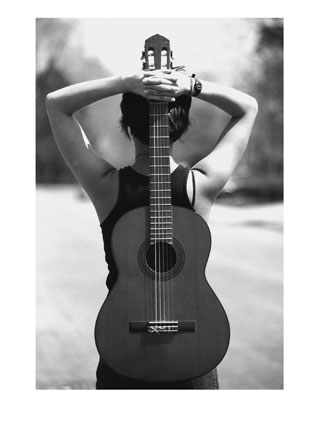On Guitars and Women
The hips of a guitar transfix the eyes of boys almost as completely as the hips of a woman. Even female guitarists the world over can attest to the pleasures of the physical flow of a well-made instrument. Even the piano, which most agree to be the world’s most popular instrument (guitar is usually considered 2nd) features a sensual curvature to its design. So why was the guitar designed to evoke a female figure?
Realists will explain that the curve of an acoustic guitar allows it to be cradled comfortably on the thigh of the musician. Fair enough. But it still doesn’t explain why the proportions are consistent with the human anatomy. Notice that the top pair of curves in the picture here are smaller than the lower curves, just as it is on a woman’s body. Ralph Denyer, in his book The Guitar Handbook (in a curiously titled section titled “The anatomy of the acoustic guitar”), explains that the shape of an acoustic guitar’s “soundbox” amplifies the sound of the vibrating strings. The question presses on: why is the female figure the ideal shape for this acoustic amplification?
The different parts of an acoustic guitar are even designated with names like “waist,” “back,” and “rib.” Symbolism can be drawn from this idea. The distinctly Freudian neck of the guitar is the decidedly “masculine” part of the instrument, which pairs with the female “body” to give birth to sound. Music. This could be what draws poets, adolescents, and hopeless romantics to the instrument. Not just the ease of its portability, but the subconscious sexuality and romance at work when a guitar is used to create music. The idea of instinctively using music as a metaphor for existence is not a new concept. Look no further than Pythagoras’ notion of musica universalis–the so-called “music of the spheres.”
The image of a guitar seems to get its power from its feminine form. It is a form ideally suited for the creation of both life and music.
https://lithe.wordpress.com/2008/01/01/on-guitars-and-women/

